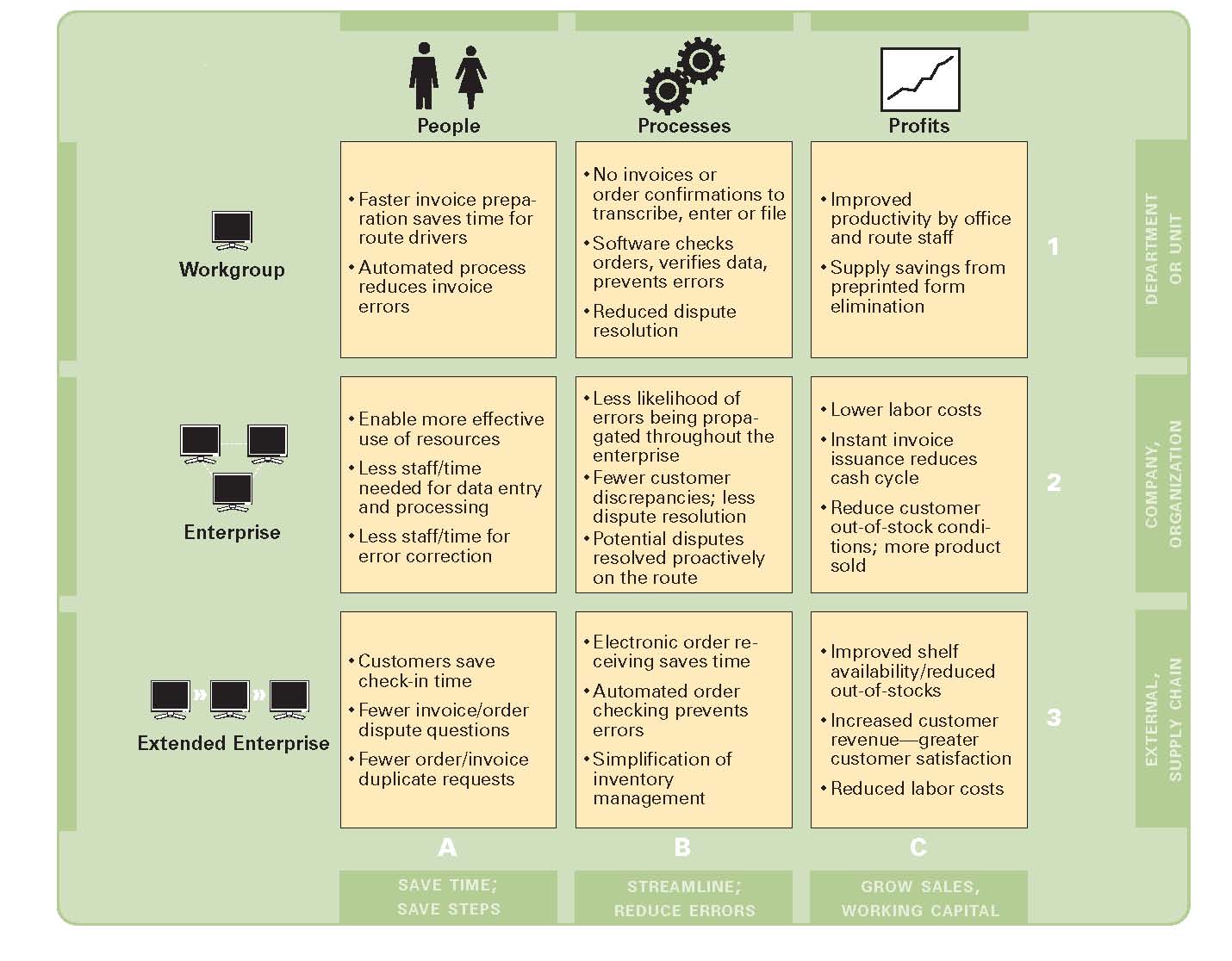Improve Truck Freight Carrier Productivity and Cost-Effectiveness with Mobility Technology
The Case for Automating Freight Logistics
In today’s tough business conditions, over-the-road freight carriers are looking for ways to increase productivity, decrease operating expenses, and retain customers. The cold truth is that unpredictable fuel costs, rising labor rates, and other expenses continue to whittle away at freight trucking profit margins. Just as challenging, truck freight customers demand supply chain management solutions that offer reverse logistics and forward/backward traceability.
As many businesses have already discovered, mobility technology delivers exceptional benefits to a wide range of operations. Handheld computers, networking, and mobile thermal printers are proven productivity enhancers. When deployed to truck freight carriers, drivers could quickly enter information into networked handheld computers, scan labels, or tag shipments with bar code or radio frequency identification (RFID) labels. In fact, personnel throughout a trucking enterprise could benefit from instant access to accurate information—while in the office, at the customer location, or on the road.
This white paper discusses key considerations when selecting mobility solutions, and unveils how mobilityenabled operations can improve freight trucking efficiency, reduce operating expenses, and boost customer satisfaction.
The Business Value of Mobility Technology
To help identify, classify, and categorize the benefits of mobility technology across a trucking organization, Zebra developed the Zebra Business Value Map. The map relates how mobile computing and printing applications affect people, processes, and profits.
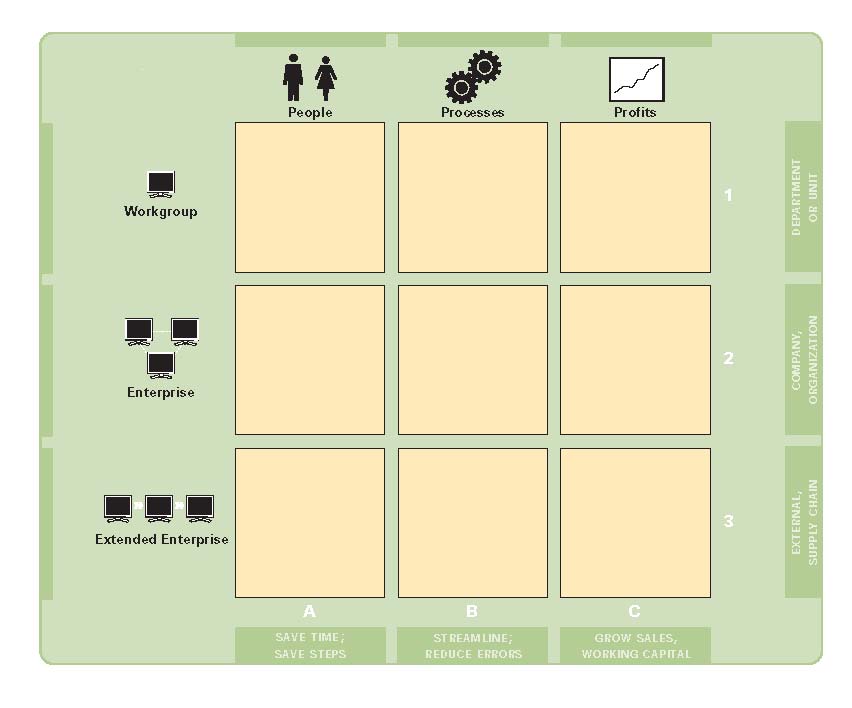
Evaluating the Need for Mobility Technology—People, Processes, and Profits
To make the Zebra Business Value Map relevant to a company’s unique operations and identify areas for improvement, consider the following questions:
-
- How do operating costs affect profit margins?
- How long does it take to process pick-up and delivery invoices?
- How do drivers submit paperwork back to their home office for processing while on the road?
- What is the truck idle time per pick-up and delivery and what is the impact on fuel cost?
- Does inaccurate pick-up or delivery information cause problems with customers and how much does it influence customer satisfaction, loyalty, and the bottom line?
- What is the reoccurring cost of using hard to read, three-layer carbon copies, or large print forms, during freight logistics?
- What percentage of time do drivers and office staff spend handling errors?
- How much time do drivers spend manually updating time logs?
- Do drivers tag shipments with labels for traceability?
Mobility Considerations—Standards, Scalability, Reliability, Security
Mobility solutions for trucking operations include handheld computers running application software, mobile thermal printers, and wireless network connectivity. For each technology, be sure to choose the solution with the optimal support of standards, scalability, reliability, and security.
| Application-Level Integration | Handheld Computer | Portable Printer | |
|---|---|---|---|
| Standards | Network and inter-device connection (802.11, Bluetooth®) | Operating systems (Microsoft® Windows Mobile®, Windows® CE) | Thermal printing options (4″ wide with a variable length) |
| Scalability | Application usability and compatibility | Expansion ports and networking | Bar code and RFID printing |
| Reliability | Partnership with best-in-class service providers | Ruggedness and durability for field usage | |
| Security | Strong wireless and data encryption | ||
Mobility Technology Delivers Critical Business Value
To visualize how mobility solutions enhance trucking operations, the following section summarizes the benefits achieved by Zebra logistics customers, and places them within the Business Value Map.
Realize Increased Workgroup Productivity—People
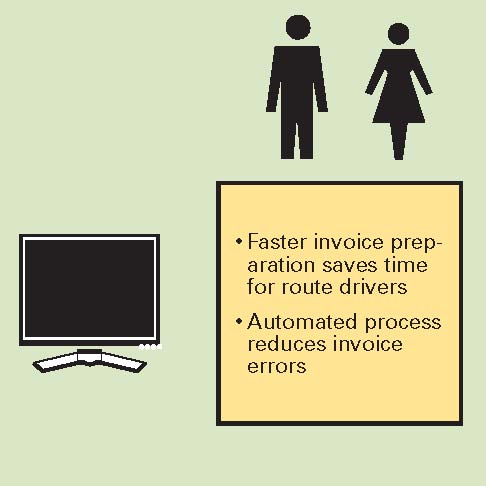
In most cases, freight drivers are utilizing pre-printed documents created by their home office. These invoices often require updating by the drivers to make corrections and additions, usually via handwritten notes. Notes or special instructions may be crammed in the margins or written on a separate paper, which may be lost or separated from the actual invoice, complicating the driver’s daily tasks.
Completing documentation on a handheld computer saves time and improves productivity. Software can automatically populate customer information and other fields, and drivers can submit “paperwork” back to their home office for processing, even while on the road. With professional drivers in short supply, and employee turnover costs escalating, mobile technology can help reduce driver workloads while improving overall job satisfaction.
Improve Workgroup Accuracy—Processes
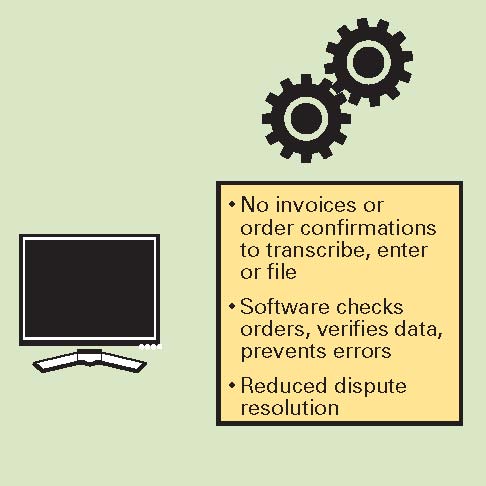
During freight pickup or delivery, poor handwriting on documentation and low-quality carbon forms increase the chance of inaccuracies. Using a handheld computer application with preloaded, pre-verified customer information and other data prevents errors and improves accuracy. Most software applications require users to verify data if they attempt to enter questionable quantities, prices, or other information.
Producing load manifests, pick-up/drop-off confirmations, and other documentation on demand instead of preprinting at the start of the day saves time and improves accuracy. Portable thermal printers give users the option of mounting them in the truck, or choosing wearable or handheld models that save time by eliminating the trip to the vehicle to generate documentation.
Enhance Workgroup Efficiency—Profits
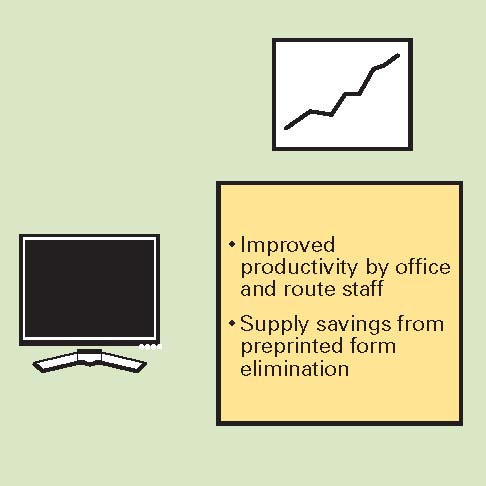
The process improvements mobile workers gain from handheld applications directly enhance profitability. Mobile solutions reduce operating expenses and can help increase revenues through improved productivity. Freight truckers can complete more stops per day, enabling businesses to expand and grow their customer base without adding personnel.
Replacing traditional paper-based documents and other forms with thermal printer paper can reduce operating costs. One Zebra customer compared the costs of 8.5-by-11-inch invoices with a 4-by-6-inch invoice produced on a Zebra mobile thermal printer. The thermal media was measured at 2.7¢ per invoice, compared to 6¢ for full sheets used in inkjet or impact printers-a 45 percent cost savings.
In fact, switching from full, plain-paper sheets to 4 x 6 thermal receipts can yield savings of $330 per 1,000 invoices. Replacing bulky matrix printers with thermal printers also eliminates multi-part forms and ribbons, reducing costs even further.
Streamline Enterprise Tasks—People
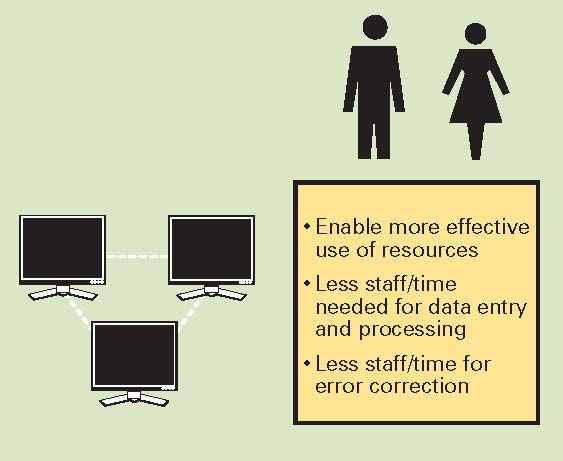
In large trucking freight organizations, the permanent staff includes dispatchers, billing clerks, customer service representatives, inventory managers, warehouse workers and other personnel who work with or support drivers.
At the enterprise level, mobile technology can help reduce the labor needed for data entry and processing. Drivers recording customer data on handheld computers can automatically upload the data to update pickup, delivery, billing, and inventory systems. Remote upload eliminates the error-prone, manual process of deciphering handwritten documentation and notes, entering them into the appropriate systems, and filing the original paperwork.
Save Time Throughout the Enterprise—Processes
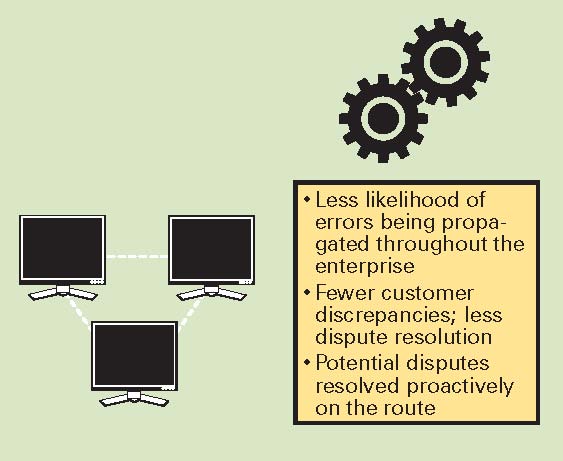
Reducing paper-based errors generates a wide range of labor saving and process improvement benefits. According to a recent GMA report, the average discrepancy rates for route invoices are 10.5 percent for small-format retailers and 15.4 percent for grocery stores and other large-format retailers.
Beyond error reduction, mobile-enabled solutions that include portable thermal printers give freight truckers a powerful tool for improving the process through bar code and RFID labeling. During freight routes, drivers can print out a formatted bar code or RFID label and tag the shipments—allowing enterprises to reap the full benefits of reverse logistics and traceability.
Boost the Enterprise Bottom Line—Profits
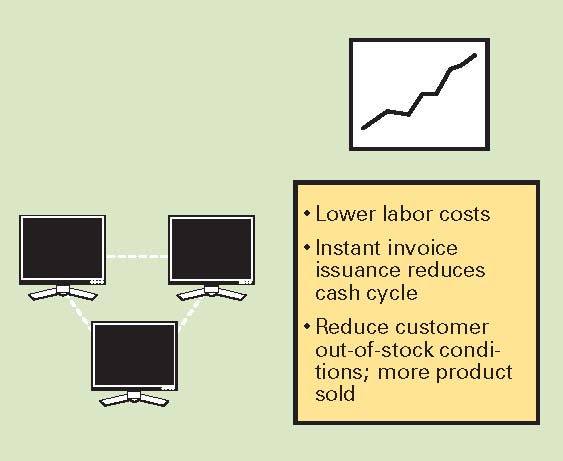
While improving the process directly affects profitability, there are other, less obvious benefits. Businesses that rely on manual, paper-based operations typically cannot issue invoices for several days after they deliver shipments. As a result, these companies experience a billing- and cash-cycle disadvantage when compared to companies with mobility-enabled operations.
When freight drivers record invoice and inventory information on a handheld computer, the result is near-instantaneous update of enterprise information systems. Reducing information lag times also improves inventory accuracy, which can decrease out of stocks and the associated lost revenue. In addition, freight tagged with bar code or RFID labels enables precise tracking and accountability-reducing inventory loss.
Drive Value to the Extended Enterprise—People
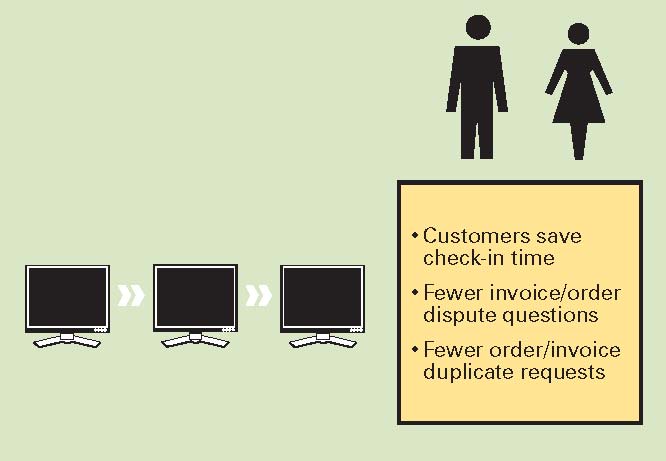
Processes that streamline freight trucking tasks also tend to make things easier for their customers. For example, complete and accurate documentation spares customers from rechecking delivery information and inventory, and placing rush orders to cover shortfalls. Improved accuracy also eliminates the need to prepare overshipments for return, saving labor by cutting down the time required to check incoming orders.
Customers also benefit by receiving legible, error-free paperwork from drivers. The consistent print quality from thermal printers creates quality invoices, receipts, orders and other documents that customers can easily process, and that will remain legible after processing and filing.
Meanwhile, by presenting accurate, legible documentation, freight carriers can save time needed to handle customer questions and resolve errors, and enhance their companies’ professional image.
Refine Extended Enterprise Supply Management—Processes
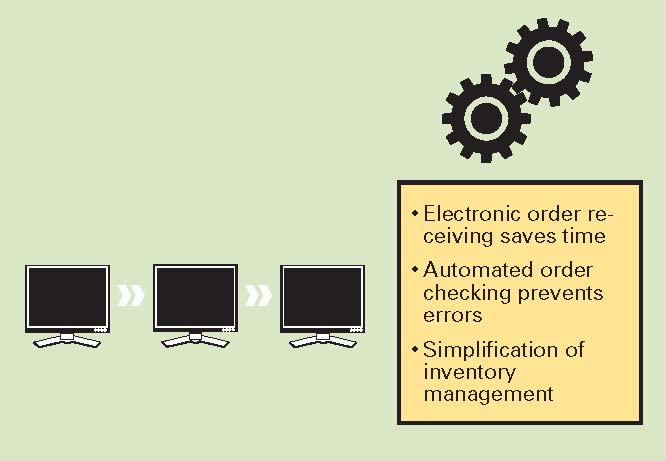
With freight levels down, customer retention is critical. Today’s competition is keener than ever, and account turnover costs continue to grow. Handheld computing applications for freight pick-up and delivery contain features such as bar code and RFID scanning to ensure accurate order processing—directly benefiting the customer.
The ability to print bar codes, RFID labels, and then scan the inventory streamlines the supply chain, enabling just in time (JIT) and other supply management initiatives. Validating delivery saves time during the receiving and auditing process, simplifies inventory management, and promotes inventory accuracy.
Lift Extended Enterprise Margins—Profits
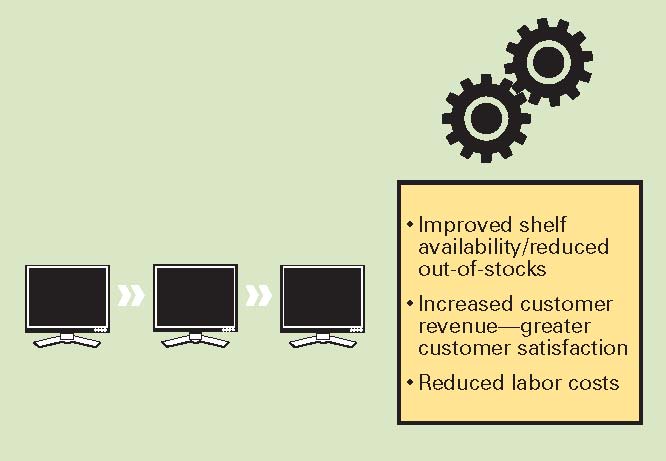
When a supplier implements a process that saves time and reduces errors, the customer often realizes higher profitability. Because mobility-enabled pick-up and delivery operations improve inventory accuracy, customers can improve shelf availability and reduce out-of-stock inventory disruptions. In fact, customers prefer to do business with freight carriers that focus on productivity and efficiency— from the front line to the bottom line.
Mobility-Enabled Productivity Creates Profitability
By teaming up with Zebra and its partners, businesses gain best-in-class mobility, integration, and thermal printing solutions. Mobile computing and printing applications simplify freight trucking operations—positively influencing the processes and people throughout the enterprise, and their customers. Now, freight trucking enterprises can feel confident as they travel down the road to increased profitability.
